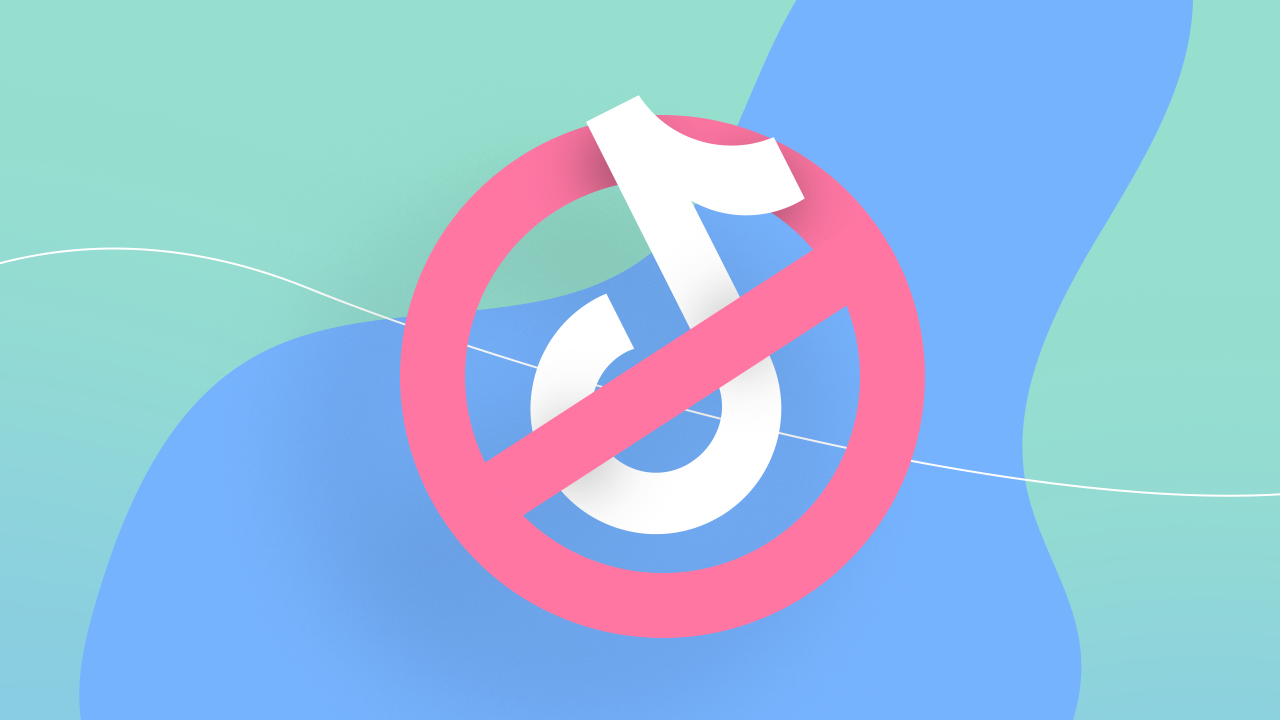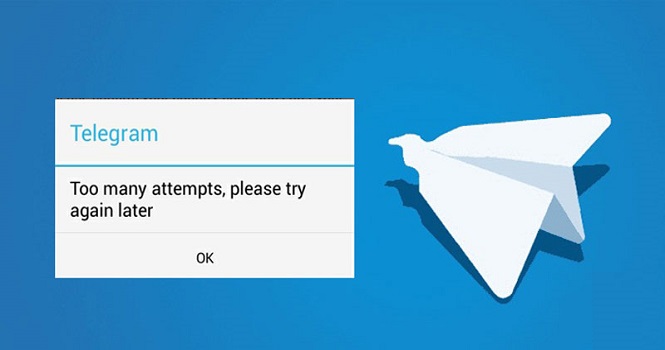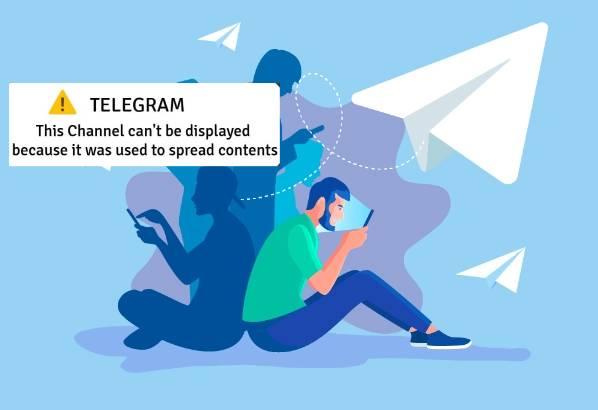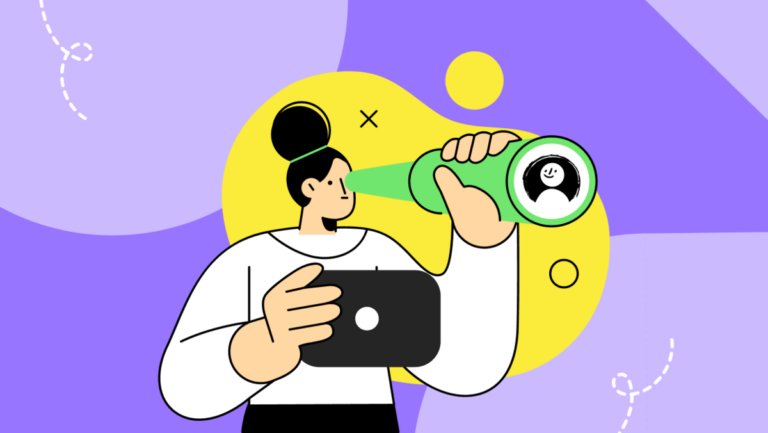TikTok Shadowban: 8 Ways To Get Unshadowbanned
In the dynamic world of social media, TikTok has emerged as a platform where fame can be instantaneous, yet floating. A phenomenon known as a “shadowban” has become a critical concern for content creators on TikTok. This article delves into what a TikTok shadowban is, its implications, and how to potentially resolve it, drawing insights from various authoritative sources.
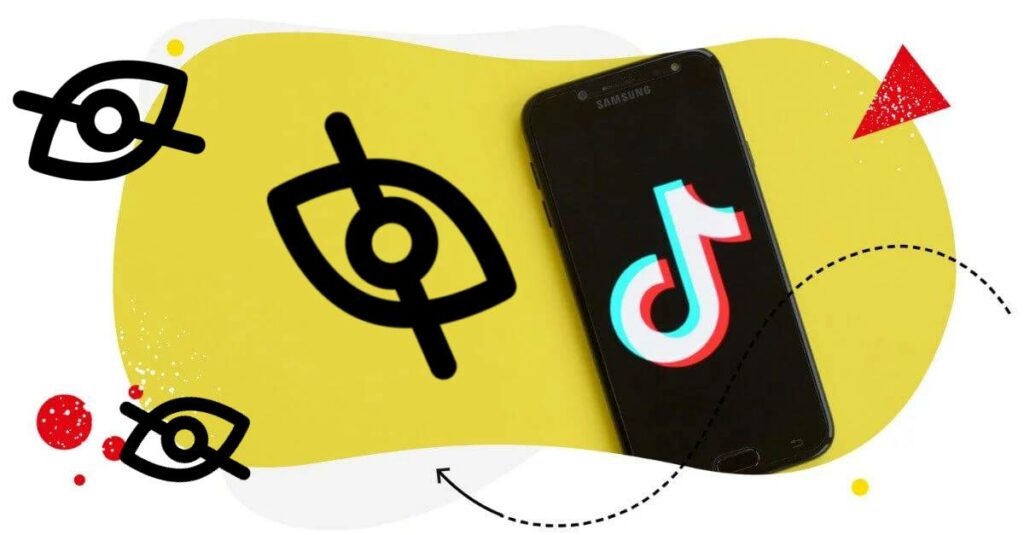
What is a TikTok Shadowban?
A shadowban on TikTok is an unofficial yet widely recognized term for a situation where a user’s account becomes restricted without their knowledge. This restriction leads to a significant decrease in the account’s visibility on the platform. When shadowbanned, a user’s content no longer appears on other users’ “For You” pages or in the app’s hashtag sections. This diminished visibility directly translates to a drop in engagement, as fewer people can see and interact with the content.
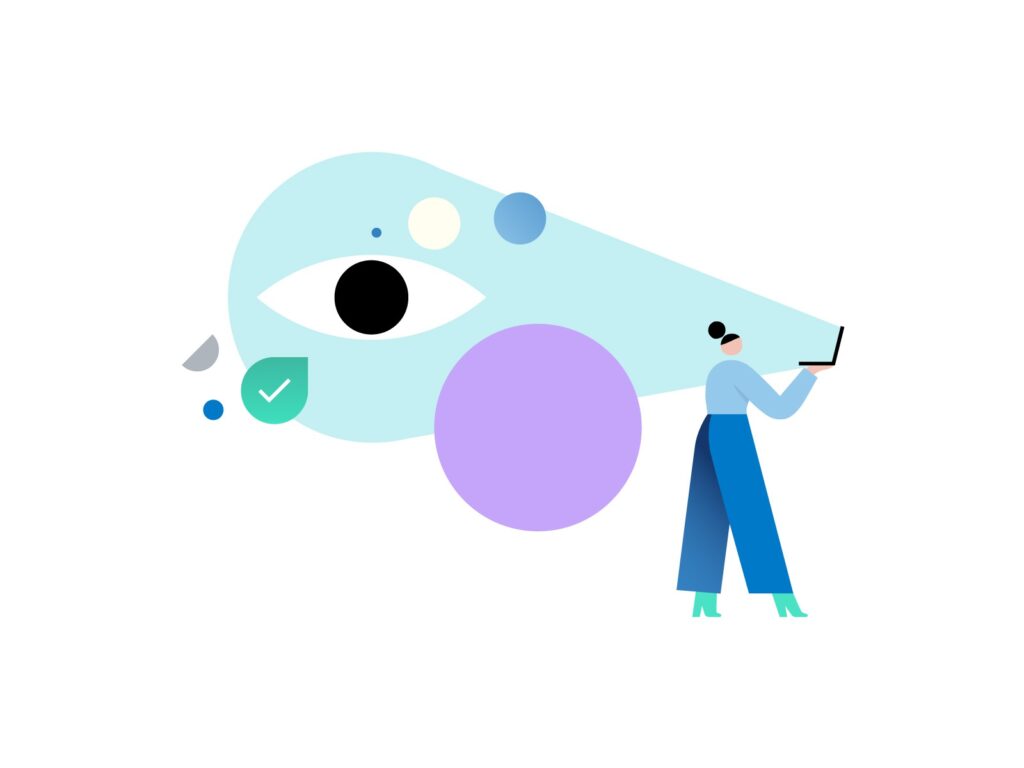
How Does Shadowbanning Work?
Shadowbanning is an automated process implemented by TikTok’s algorithm. The primary purpose of this mechanism is to safeguard the platform and its users from various issues, including copyright infringements, spam, threats, and inappropriate content. Essentially, it’s a way for TikTok to enforce its Community Guidelines by putting an account on a temporary “timeout.” This action is taken without notifying the user, leading to a sudden and often perplexing drop in likes, views, and comments.
It is important to note that TikTok does not officially recognize shadow banning of user accounts. However, there is enough information to suggest that the app imposes temporary restrictions on certain accounts at certain times.
Causes of a TikTok Shadowban
There are various reasons why an account might be shadowbanned, with some of the most significant being:
#1 Violation of TikTok’s Community Guidelines
The most straightforward reason for a shadowban is breaching TikTok’s Community Guidelines. Familiarizing yourself with these guidelines is the best way to avoid such issues. The list of rules might be extensive, but there are key areas to steer clear of:
- Posting Adult Content
- Bullying or Harassment
- Copyright Infringement
- Displaying violent extremism
- Promoting dangerous acts and challenges
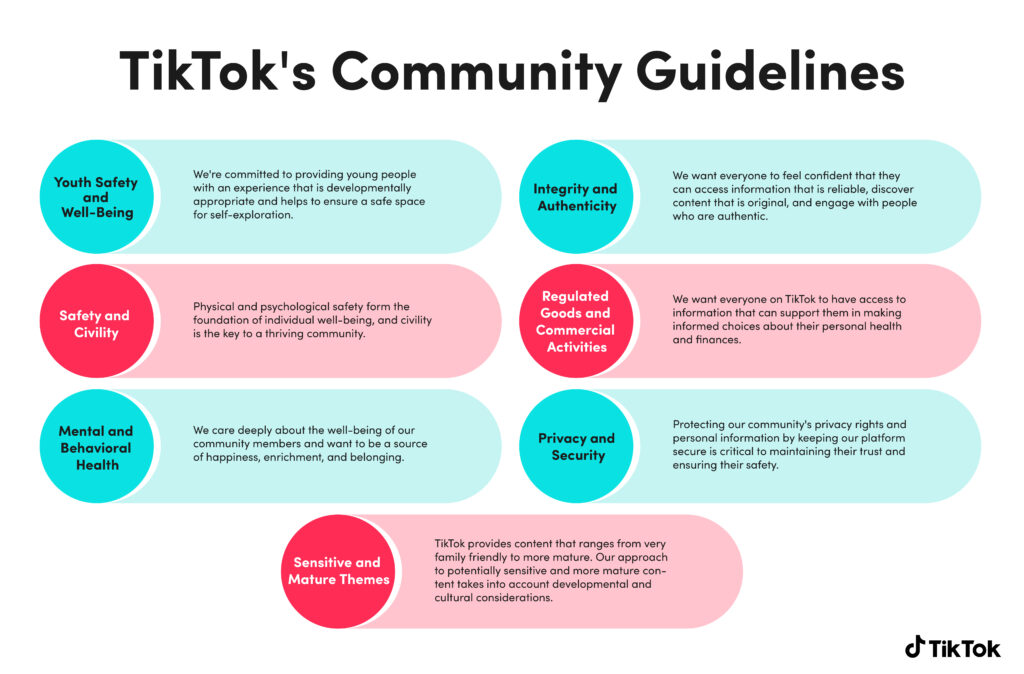
Posting Adult Content
Uploading adult material is a clear violation of TikTok’s Community Guidelines. This encompasses any form of nudity, pornography, or sexually explicit content, which can lead to a shadowban or even a total ban from the platform.
Bullying or Harassment
TikTok is dedicated to fostering a community that supports individual expression while being inclusive. The platform strictly prohibits any form of shaming, bullying, or harassment. Content that is perceived as abusive, threatening, or harassing towards others may jeopardize your account, potentially leading to a shadowban.
Copyright Infringement
Sharing content that you don’t own is not only frowned upon, but it’s also outright illegal.
TikTok, similar to other social media platforms, enforces a strict policy against posting content that infringes on others’ copyright.
Uploading videos that violate copyright laws, trademarks, or intellectual property rights is a serious violation on the platform.
In essence, it’s best to focus on creating your own original content — it’s not only safer but also showcases your unique creativity.
Displaying violent extremism
TikTok strictly forbids its users from using the platform to promote or threaten violence. Content that supports violent extremist groups, individuals, or acts is also against the Community Guidelines. Therefore, if your content breaches these rules, you risk being shadow banned.
Promoting dangerous acts and challenges
TikTok often sees a trend of teenagers engaging in stunts and challenges that can be perilously risky. Examples include excessive consumption of Benadryl or challenges that involve holding one’s breath to the point of blacking out. These viral trends can pose serious dangers. To ensure user safety, TikTok strictly bans content that displays, endorses, or normalizes hazardous activities that could lead to serious injury or even death. Therefore, both brands and influencers need to exercise extreme caution regarding the types of challenges they endorse and the content they produce. If your content falls into this risky category, it shouldn’t come as a surprise if TikTok opts to shadow ban your account.
#2 Movie or series spoilers
Often, TikTok users encounter negative reactions when they share spoilers from recent movies or series. This is because TikTok’s algorithm is designed to shield users from seeing key scenes of new movies they might not have seen yet.
Profiles that leak such information, particularly video content revealing crucial plot points, are at risk of being shadowbanned by TikTok for this type of disclosure.
TikTok has fine-tuned its algorithm to detect and manage such activities on the platform, ensuring adherence to community guidelines and preventing exposure to inappropriate content.
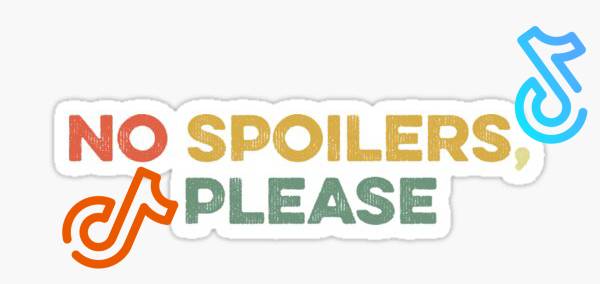
#3 Spamming behavior
Engaging in spam-like activities can also lead to a shadowban on TikTok, not just the content of your videos. Behaviors considered inauthentic or spammy, such as exhibiting bot-like actions (e.g., mass following other accounts, particularly with a new account) or excessively posting content in a short period, can trigger account restrictions.
Moreover, participating in the purchase or sale of fake engagements is a serious violation of TikTok’s Community Guidelines and can have severe consequences. Other actions, like impersonating someone or disseminating harmful misinformation, are also activities that could lead to your account being shadowbanned.
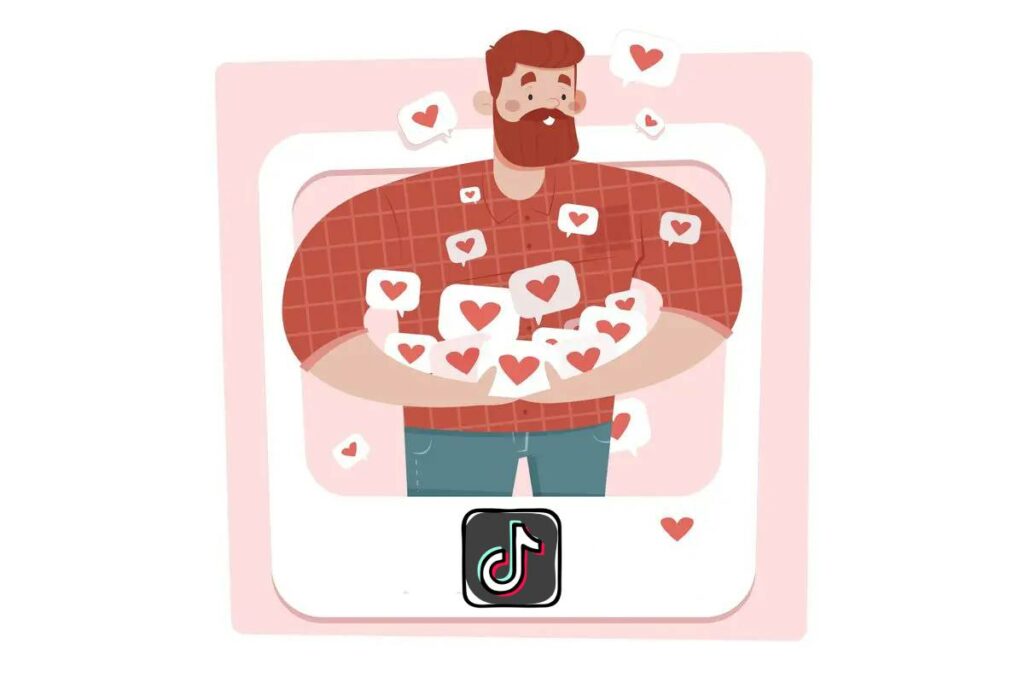
#4 Accidental Shadowbanning
The enforcement of TikTok’s guidelines, managed by an algorithm, can sometimes lead to accidental shadowbanning. This is where the situation becomes intricate and, at times, politically charged. Occasionally, certain topics or content might be erroneously flagged by the platform’s automated censors.
This issue has sparked criticism, with some alleging that TikTok has been partial or has deliberately suppressed the voices of activists and protestors. A notable instance occurred during the peak of the George Floyd protests in 2020. Many activists supporting the Black Lives Matter movement reported that their posts tagged with #BlackLivesMatter or #GeorgeFloyd were receiving zero views, suggesting a potential shadowban.
In response to these allegations, TikTok issued a detailed statement, attributing the issue to a technical glitch and expressing their commitment to enhancing diversity on the platform.
The Black Lives Matter movement isn’t the only group to have raised concerns about being shadowbanned. However, a TikTok spokesperson told Refinery29 that the platform is prompt in addressing situations where content is incorrectly flagged by their algorithms.
A TikTok representative emphasized, “Our community of creators is vibrant and diverse. Our primary goal at TikTok is to maintain a safe space for people to express their ideas and creativity, regardless of their background. We acknowledge that our decisions aren’t infallible, which is why we are continuously expanding our safety operations to better serve our diverse community.”
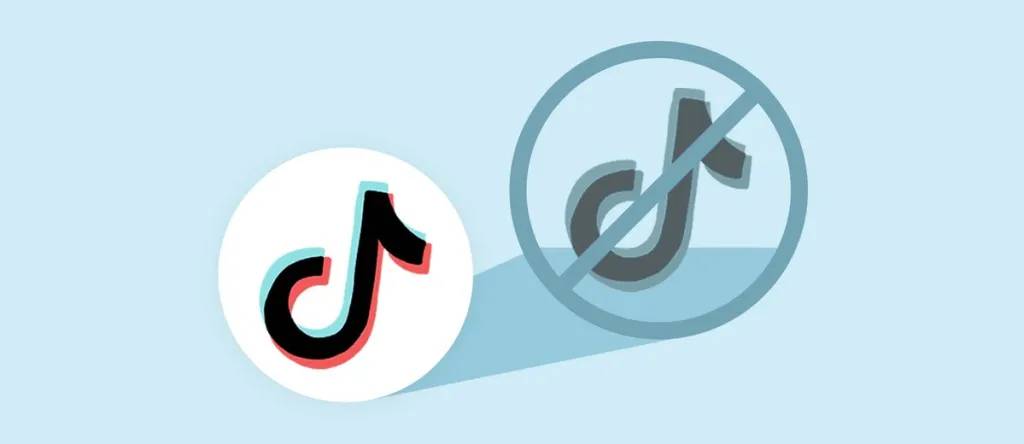
Others
- Promoting drugs and drugging
- Fake news and misinformation
- Racism
- Using third-party apps
- Buying fake followers and fake engagement numbers
- Using forbidden hashtags
- Getting a report by other TikTok users for content stealing or copying
- Abusing minors for TikTok videos
How Do I Know If I am Shadowbanned?
Understanding whether you’ve been shadowbanned on TikTok can be challenging, primarily because the platform doesn’t notify users of such restrictions. A shadowban quietly limits your account’s visibility, often leaving you in the dark about the status of your content. However, there are several signs that can help you determine if you’ve been hit with a shadowban:
- Invisibility on the For You Page. One of the most noticeable signs is your content’s absence from TikTok’s For You page. This page is crucial for gaining exposure, and if your content isn’t appearing there, it could be a sign of a shadowban.
- Issues with Video Uploads. If your videos are perpetually stuck in “under review” or “processing” status, this could indicate a shadowban. Normally, videos should upload and be available relatively quickly, so prolonged delays are a red flag.
- Sudden Drop in Engagement. A significant and sudden decrease in likes, views, or shares is a strong indicator of a shadowban. If you notice that your content, which previously performed well, suddenly experiences a nosedive in engagement, it might be due to a shadowban.
- Content Not Found in Search Results. If your videos are not appearing in search results or on the feed, especially when searched via hashtags, it’s a sign that your content’s visibility has been restricted.
- Stagnation in Follower Growth. An inability to gain new followers or receive likes and comments from others can also be a symptom of a shadowban.
- Cross-Referencing with Friends. A practical way to check if you’re shadowbanned is to ask a friend to see if your posts appear on their For You page. If they typically see your content but suddenly can’t, it could confirm your suspicions of a shadowban.
How to Get Unshadowbanned on TikTok
There’s no magic solution to instantly reverse a shadowban. There are several steps you can take to mitigate its impact and prevent future occurrences.
#1 Delete Flagged Content
If TikTok has notified you about content that violates their Community Guidelines, it’s crucial to remove it promptly. This action demonstrates your compliance and understanding of the rules. Keep a record of what led to the violation to avoid repeating the same mistake.
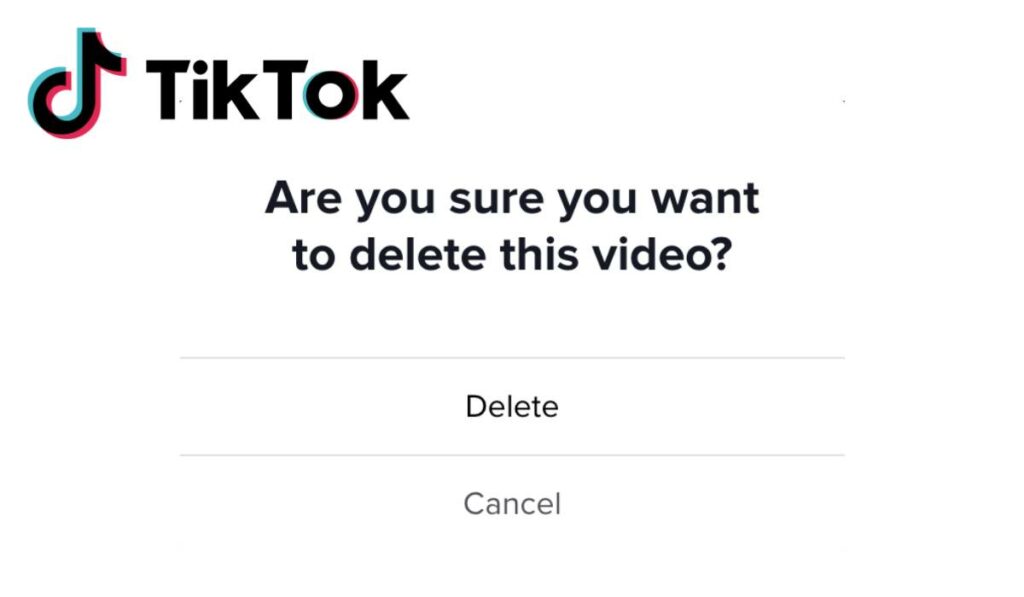
#2 Adherence to Community Guidelines
Review TikTok’s Community Guidelines thoroughly. Assess your videos, captions, and hashtags for any potential triggers that might have led to the shadowban. Strict adherence to these guidelines is key to restoring normalcy to your account.
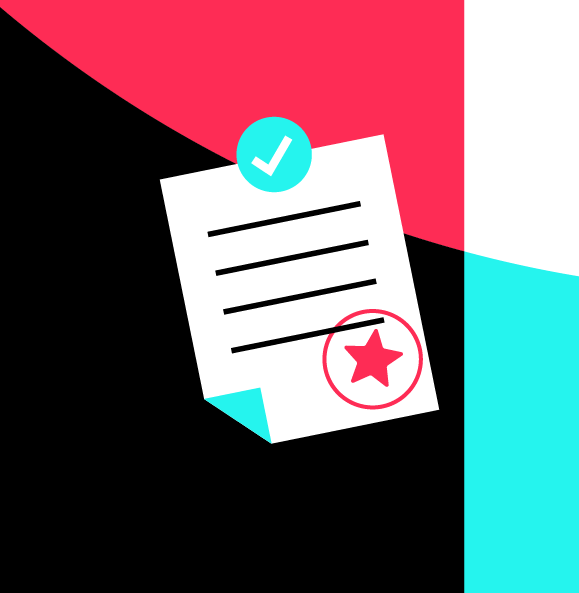
#3 Reinstall the App
Sometimes, simply deleting and reinstalling the TikTok app can help. This process clears the cache and ensures you have the latest version of the app, which might resolve some underlying issues.
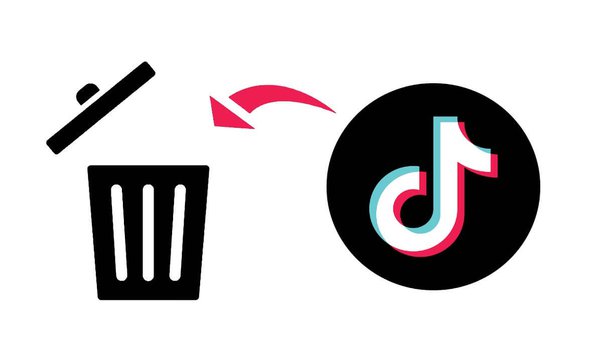
#4 Patience and Waiting
Most shadowbans on TikTok are temporary, typically lasting around two weeks. If other measures don’t work, waiting out this period is often the only recourse. During this time, your engagement may suffer, but patience is key.
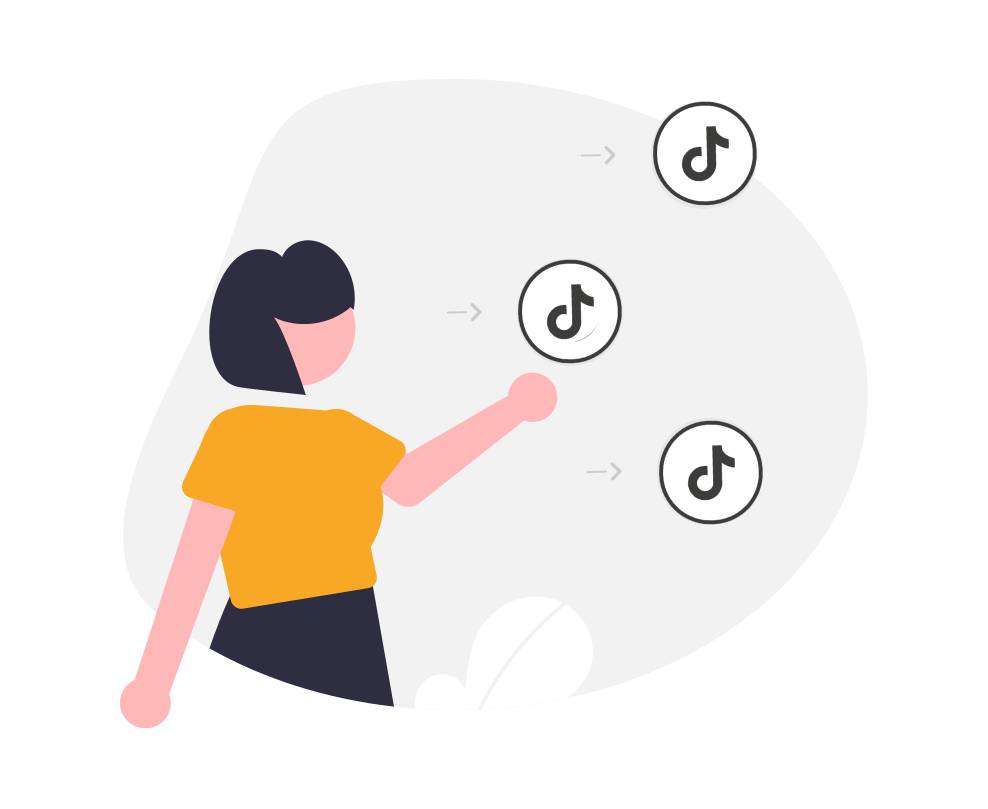
#5 Contact TikTok Support
If the shadowban persists beyond a reasonable timeframe, consider reaching out to TikTok’s support team for assistance. Be detailed and polite in your communication to get the most helpful response.

#6 Monitor Your Analytics
Keep a close eye on your TikTok analytics. This will help you identify any sudden drops in engagement that could indicate a shadowban. After about two weeks, check if there’s an improvement in your engagement rates.
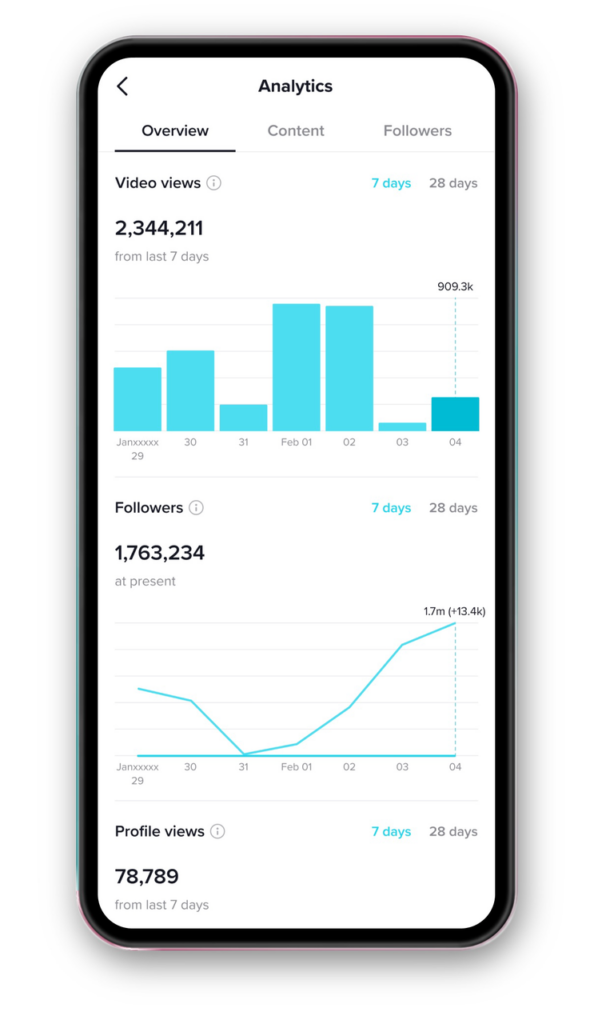
#7 Regular Content Posting
Continue to post content regularly, ensuring it aligns with TikTok’s guidelines. Consistently demonstrating that your content is appropriate and valuable can expedite the lifting of a shadowban.
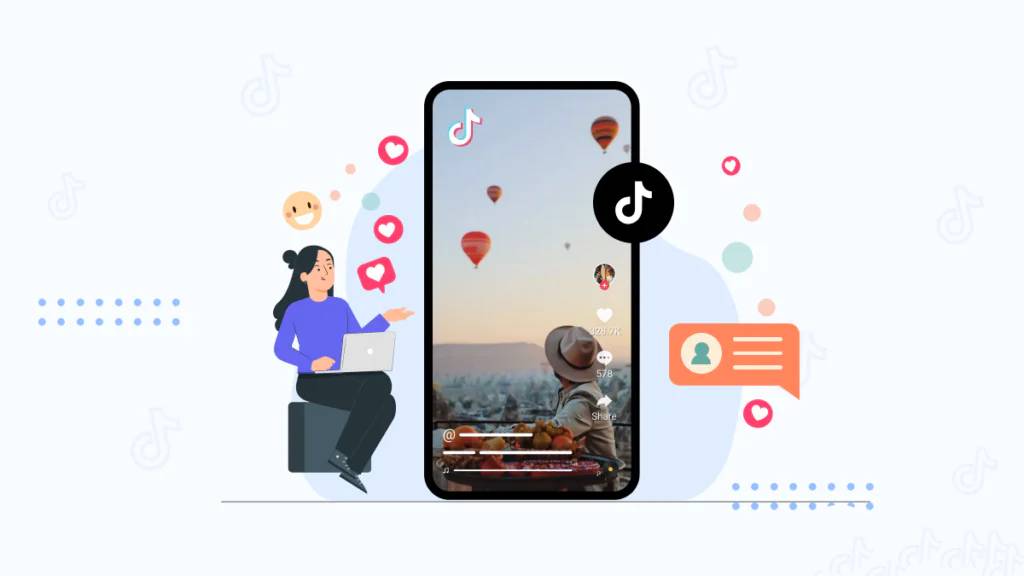
#8 Upgrade To a Pro Account
Switching to a pro account might not guarantee immediate results, but it could enhance your reach over time. Pro account holders benefit from additional features for audience engagement, including post boosting and advertising tools.
Opting for a pro account is particularly beneficial for those aiming to monetize their TikTok presence or representing a brand. These accounts provide valuable analytics, including data on likes and shares, which can be utilized just like any other analytics data to refine your strategy.
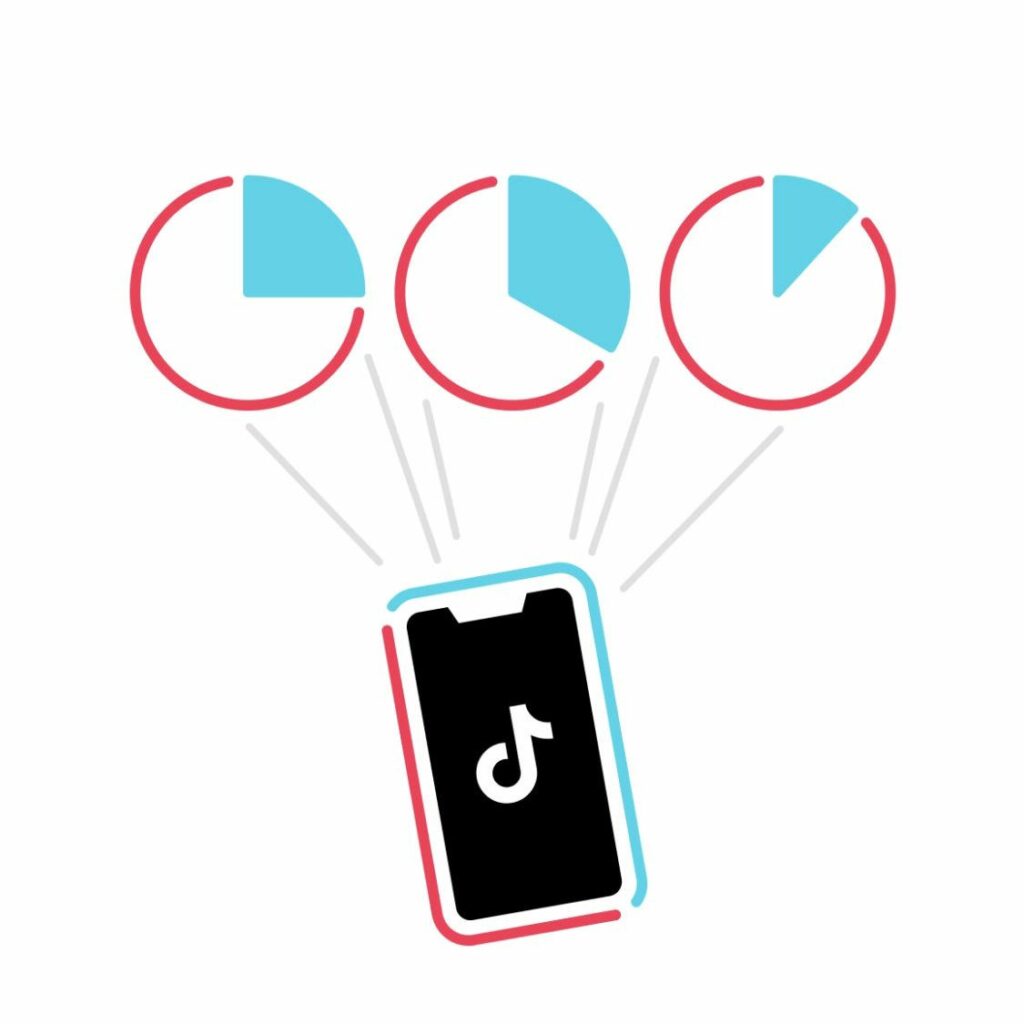
Conclusion
Navigating a TikTok shadowban requires understanding and strategy. These bans, which lead to decreased visibility and engagement, often stem from violating TikTok’s guidelines. Here’s a concise guide to manage and avoid shadowbans:
- Recognize Shadowbans. They occur without notification, leading to reduced engagement and growth.
- Avoid Common Triggers. Infringements like hate speech, inappropriate content, and misuse of hashtags often lead to shadowbans.
- Recovery Steps. Remove non-compliant content and focus on creating clear, guideline-adhering posts.
- Duration and Support. Shadowbans typically last from two weeks to a month. If issues persist, contact TikTok support.
- Follow Guidelines. Consistently adhere to TikTok’s community guidelines to ensure uninterrupted profile growth.
In essence, understanding TikTok’s rules and creating content within these parameters is key to a successful and uninterrupted TikTok experience.
How Long Does a Shadow Ban Last?
The duration of a TikTok shadow ban can be unpredictable and varies based on repeated violations. Essentially, the more frequently you break the platform’s rules, the longer the shadow ban may last, potentially leading to a permanent account block. While there’s no fixed timeframe for a shadow ban, it typically ranges from two weeks to a month. However, this can fluctuate from as short as a day or a week, to as long as permanent account suspension, especially as TikTok’s popularity surges and attracts a diverse user base.
The length of a shadow ban might also change in the future as TikTok continues to evolve its security algorithms. To avoid these scenarios, it’s crucial to adhere to TikTok’s community guidelines and focus on positively contributing to the platform’s growth.
Can I get a TikTok shadow ban if I have a private TikTok profile?
Regardless of whether your TikTok profile is private or public, any user can be subject to a shadow ban if they violate TikTok’s community guidelines and terms of service.
Why is no one viewing my TikTok?
If you notice that your TikTok videos are no longer receiving views, it could be an indication that your account has been shadow banned.
Why does TikTok shadowban certain hashtags?
TikTok may shadowban certain hashtags due to their excessive use and the high likelihood of them being associated with inappropriate content. This measure is taken to ensure that users searching for related hashtags can find relevant and suitable content, as overly used or problematic hashtags are restricted or blocked.
 EN
EN RU
RU